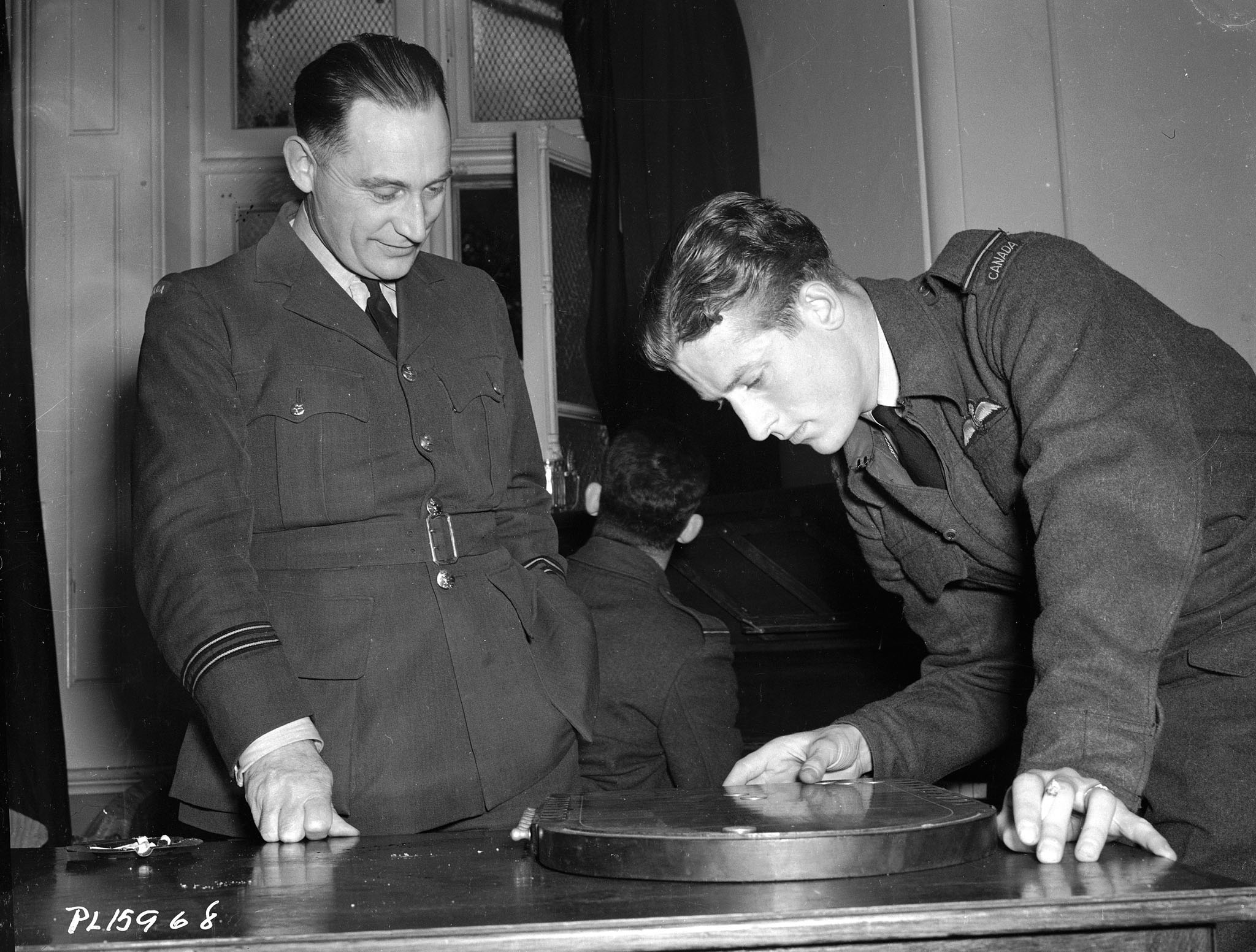Wing Commander Arthur Hicklin Warner
Biography / September 11, 2013
Every Canadian who served in the Battle of Britain contributed greatly to the war effort, and one of these many honourable Canadians was Arthur HicklinWarner.
Wing Commander Warner first joined the Canadian Air Force on a part-time basis in 1920 as a mechanic. This marked the start of a remarkable career that would take him all the way up to the rank of wing commander.
In 1923, Warner joined the ranks full-time as an aircraftsman and was one of the original airmen who had enlisted as a mechanic when the Royal Canadian Air Force (RCAF) was formed on April 1, 1924.
His first significant operation started in January 1927 when the RCAF called for volunteers for the Hudson Strait Expedition. He served at Base “C” at Wakeham Bay, Quebec, (now called Kangiqsujuaq) successfully maintaining the engines of two Fokker Universals, offering support to operations throughout the winter of 1927-28. He then served as a mechanic on a photographic detachment in northern British Columbia, where he was the sole mechanic; he made use of his ingenuity and self-reliance to keep the two Fairchild FC-2W aircraft flying.
Joining RCAF Station Jericho Beach at Vancouver in 1933, he maintained the engines there and again was chosen to serve on a select mission. Flying with Flight Lieutenant F.J. Mawdesley on the survey mission, they reviewed possible flying boat and land-plane bases along the coast. This mission formed the basis for the selection of RCAF stations on the west coast when the Second World War started.
In late 1938, Warner was posted to No.1 (RCAF) Fighter Squadron, which was about to convert to the Hawker Hurricane. By this time he was a highly-qualified and respected flight sergeant. After being promoted to warrant officer class 2 on April 1, 1939, he went overseas with the squadron, where he trained the many new auxiliary and war-time recruits who joined the squadron prior to sailing. On arrival in the United Kingdom he was promoted to warrant officer class 1. His supervisory abilities and knowledge of aircraft were in high demand, and were constantly put to the ultimate test during the Battle of Britain while maintaining the Hurricanes of No. 1 (RCAF) Squadron. Engine maintenance became crucial, especially as they wore out at a much higher rate in the intense tempo of this historic air battle. Recognition of his abilities came when he was commissioned as a flying officer on March 24, 1941.
In July 1942 he left 401 Squadron for 403 Squadron and, in November, he was again posted, this time to 418 Squadron where he served as the squadron engineering officer until June 1943. He was repatriated and became the chief engineering officer at 15 Service Flying Training School (SFTS), Claresholm, Alberta, and then 19 SFTS, Vulcan, Alberta, finally moving into the command engineering officer position at North West Air Command in Edmonton, Alberta as he was promoted to wing commander on January 1, 1945.
His post-war activities were equally notable. He served as technical advisor during Operation Investigator, which sought to identify safe landing sites from which to undertake search and rescue operations in the Arctic and far north. Here, Warner found himself serving as a mechanic, to Flight Lieutenant C.W. Weir and his Norseman aircraft. He came close to losing his life when the Norseman in which he was a passenger damaged a float while landing off the community of Holman Island, Northwest Territories (now known as Ulukhaktok) on the west coast of Victoria Island, in rough weather. The Norseman started to drift out to sea, but after more than two hours, a ship from the island found them through luck.
In April 1947, he helped in the set up of the station at Cambridge Bay in the North West Territories. He retired on August 22, 1953.
From an engine mechanic to wing commander, Warner exemplified leadership as both a non-commissioned officer and as an officer.

